Abstract
The effect of various Pasteurella multocida fractions on bovine polymorphonuclear leukocyte (PMN) functions was examined in vitro by using two encapsulated strains, P-2383 and P-1062 (both are Carter capsular type A and of bovine origin). The ability of PMNs to ingest Staphylococcus aureus and iodinate protein was significantly inhibited in the presence of live cells, heat-killed whole cells, or saline-extracted capsules but not in the presence of the decapsulated heat-killed cells. None of the fractions of the two strains inhibited nitroblue tetrazolium reduction by PMNs. The saline extract did not inhibit the binding of iodine to protein by a reaction involving xanthine, xanthine oxidase, and horseradish peroxidase. The PMN inhibitory factor was further characterized as a heat-stable capsular material of greater than 300,000 molecular weight.
Full text
PDF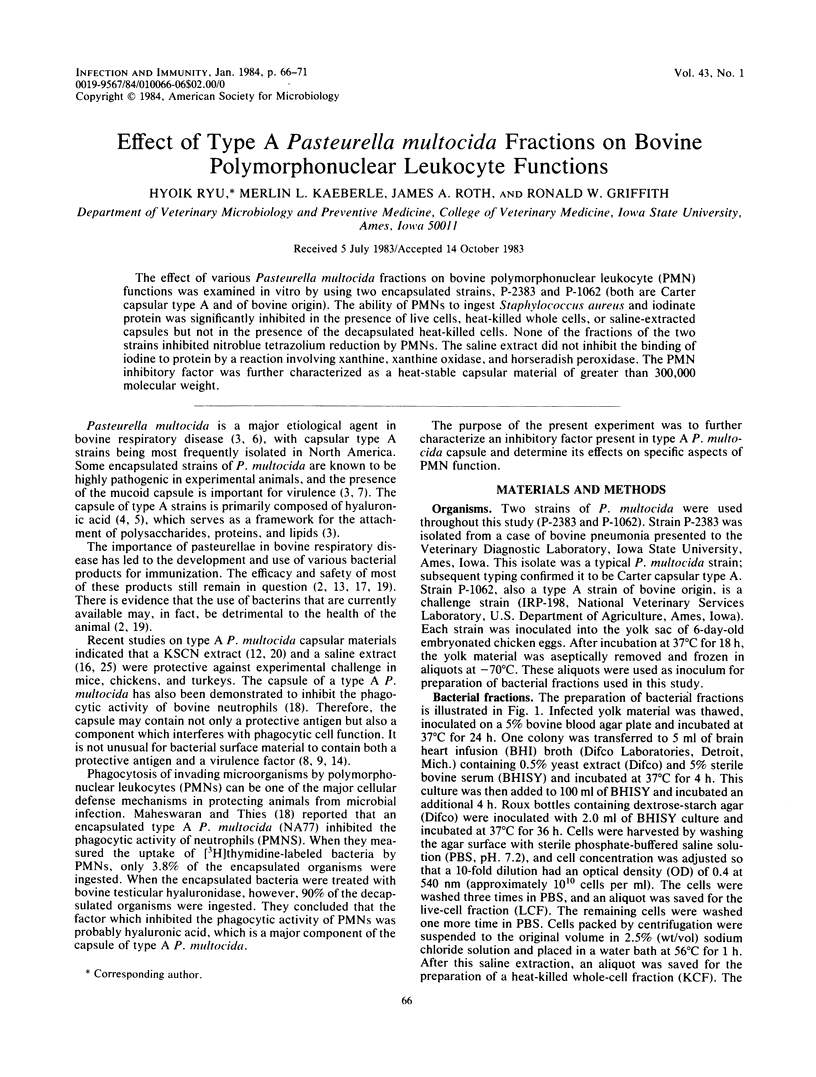
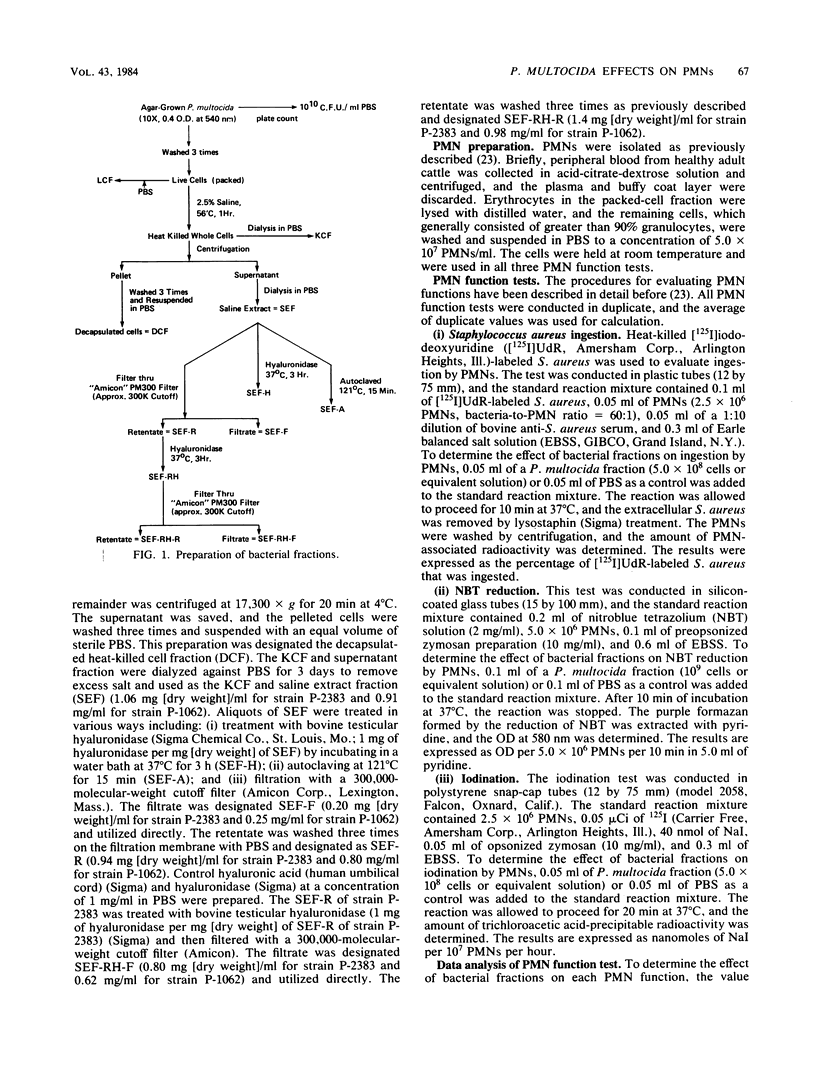
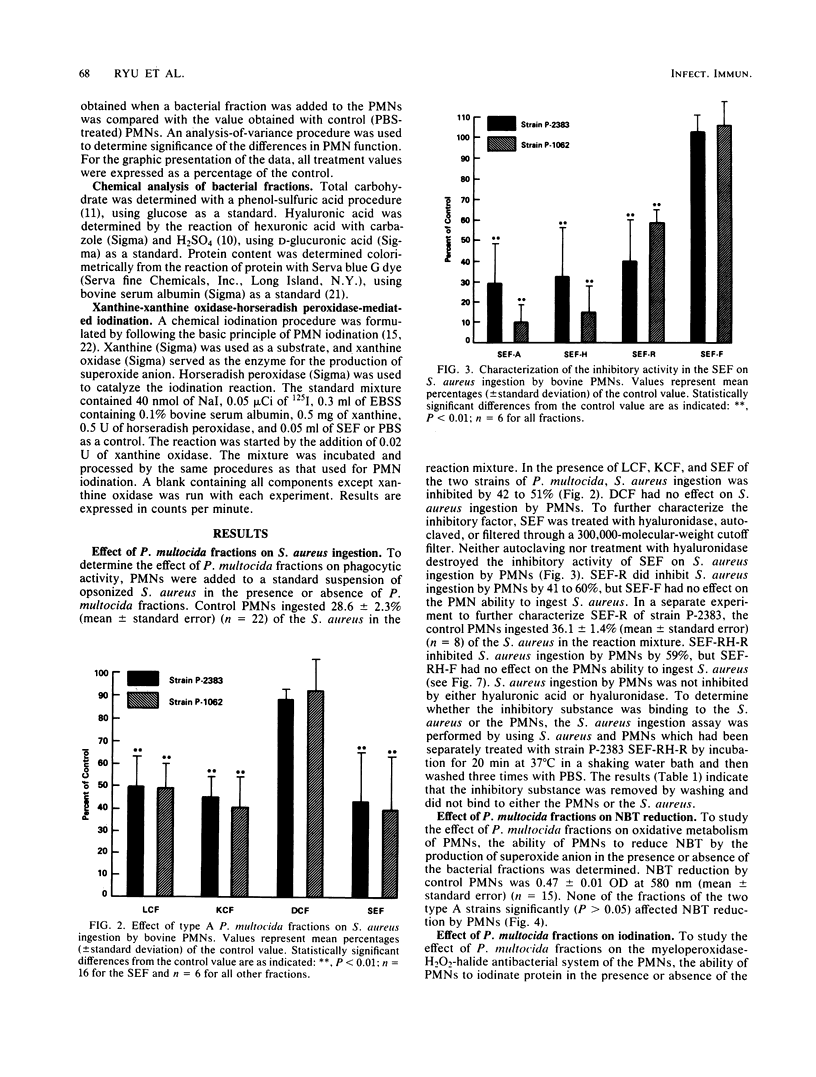
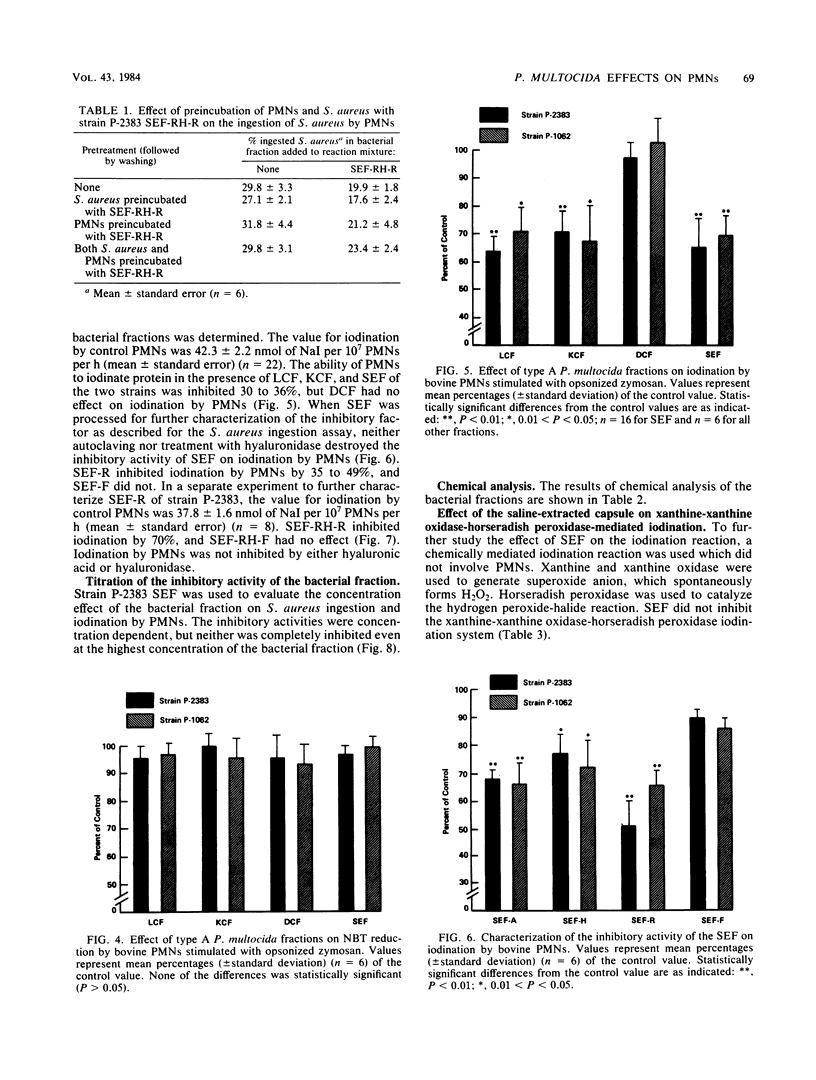

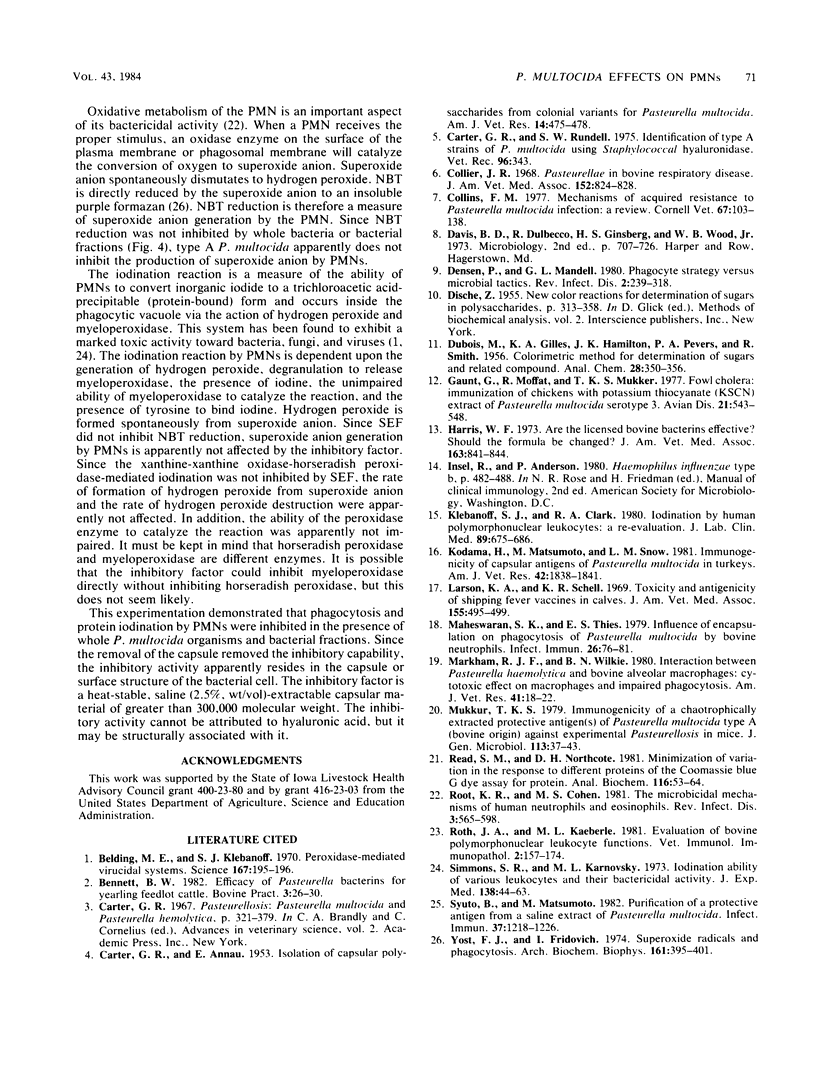
Selected References
These references are in PubMed. This may not be the complete list of references from this article.
- Belding M. E., Klebanoff S. J., Ray C. G. Peroxidase-mediated virucidal systems. Science. 1970 Jan 9;167(3915):195–196. doi: 10.1126/science.167.3915.195. [DOI] [PubMed] [Google Scholar]
- CARTER G. R., ANNAU E. Isolation of capsular polysaccharides from colonial variants of Pasteurella multocida. Am J Vet Res. 1953 Jul;14(52):475–478. [PubMed] [Google Scholar]
- Carter G. R. Pasteurellosis: Pasteurella multocida and Pasteurella hemolytica. Adv Vet Sci. 1967;11:321–379. [PubMed] [Google Scholar]
- Carter G. R., Rundell S. W. Identification of type A strains of P multocida using staphylococcal hyaluronidase. Vet Rec. 1975 Apr 12;96(15):343–343. doi: 10.1136/vr.96.15.343. [DOI] [PubMed] [Google Scholar]
- Collins F. M. Mechanisms of acquired resistance to Pasteurella multocida infection: a review. Cornell Vet. 1977 Jan;67(1):103–138. [PubMed] [Google Scholar]
- DISCHE Z. New color reactions for determination of sugars in polysaccharides. Methods Biochem Anal. 1955;2:313–358. doi: 10.1002/9780470110188.ch11. [DOI] [PubMed] [Google Scholar]
- Gaunt G., Moffat R., Mukkur T. K. Fowl cholera: immunization of chickens with potassium thiocyanate (KSCN) extract of Pasteurella multocida serotype 3. Avian Dis. 1977 Oct-Dec;21(4):543–548. [PubMed] [Google Scholar]
- Klebanoff S. J., Clark R. A. Iodination by human polymorphonuclear leukocytes: a re-evaluation. J Lab Clin Med. 1977 Mar;89(3):675–686. [PubMed] [Google Scholar]
- Kodama H., Matsumoto M., Snow L. M. Immunogenicity of capsular antigens of Pasteurella multocida in turkeys. Am J Vet Res. 1981 Oct;42(10):1838–1841. [PubMed] [Google Scholar]
- Larson K. A., Schell K. R. Toxicity and antigenicity of shipping fever vaccines in calves. J Am Vet Med Assoc. 1969 Aug 1;155(3):495–499. [PubMed] [Google Scholar]
- Maheswaran S. K., Thies E. S. Influence of encapsulation on phagocytosis of Pasteurella multocida by bovine neutrophils. Infect Immun. 1979 Oct;26(1):76–81. doi: 10.1128/iai.26.1.76-81.1979. [DOI] [PMC free article] [PubMed] [Google Scholar]
- Markham R. J., Wilkie B. N. Interaction between Pasteurella haemolytica and bovine alveolar macrophages: cytotoxic effect on macrophages and impaired phagocytosis. Am J Vet Res. 1980 Jan;41(1):18–22. [PubMed] [Google Scholar]
- Mukkur T. K. Immunogenicity of a chaotropically extracted protective antigen(s) of Pasteurella multocida type A (bovine origin) against experimental pasteurellosis in mice. J Gen Microbiol. 1979 Jul;113(1):37–43. doi: 10.1099/00221287-113-1-37. [DOI] [PubMed] [Google Scholar]
- Read S. M., Northcote D. H. Minimization of variation in the response to different proteins of the Coomassie blue G dye-binding assay for protein. Anal Biochem. 1981 Sep 1;116(1):53–64. doi: 10.1016/0003-2697(81)90321-3. [DOI] [PubMed] [Google Scholar]
- Root R. K., Cohen M. S. The microbicidal mechanisms of human neutrophils and eosinophils. Rev Infect Dis. 1981 May-Jun;3(3):565–598. doi: 10.1093/clinids/3.3.565. [DOI] [PubMed] [Google Scholar]
- Roth J. A., Kaeberle M. L. Evaluation of bovine polymorphonuclear leukocyte function. Vet Immunol Immunopathol. 1981 Apr;2(2):157–174. doi: 10.1016/0165-2427(81)90047-7. [DOI] [PubMed] [Google Scholar]
- Simmons S. R., Karnovsky M. L. Iodinating ability of various leukocytes and their bactericidal activity. J Exp Med. 1973 Jul 1;138(1):44–63. doi: 10.1084/jem.138.1.44. [DOI] [PMC free article] [PubMed] [Google Scholar]
- Syuto B., Matsumoto M. Purification of a protective antigen from a saline extract of Pasteurella multocida. Infect Immun. 1982 Sep;37(3):1218–1226. doi: 10.1128/iai.37.3.1218-1226.1982. [DOI] [PMC free article] [PubMed] [Google Scholar]
- Yost F. J., Jr, Fridovich I. Superoxide radicals and phagocytosis. Arch Biochem Biophys. 1974 Apr 2;161(2):395–401. doi: 10.1016/0003-9861(74)90320-8. [DOI] [PubMed] [Google Scholar]


